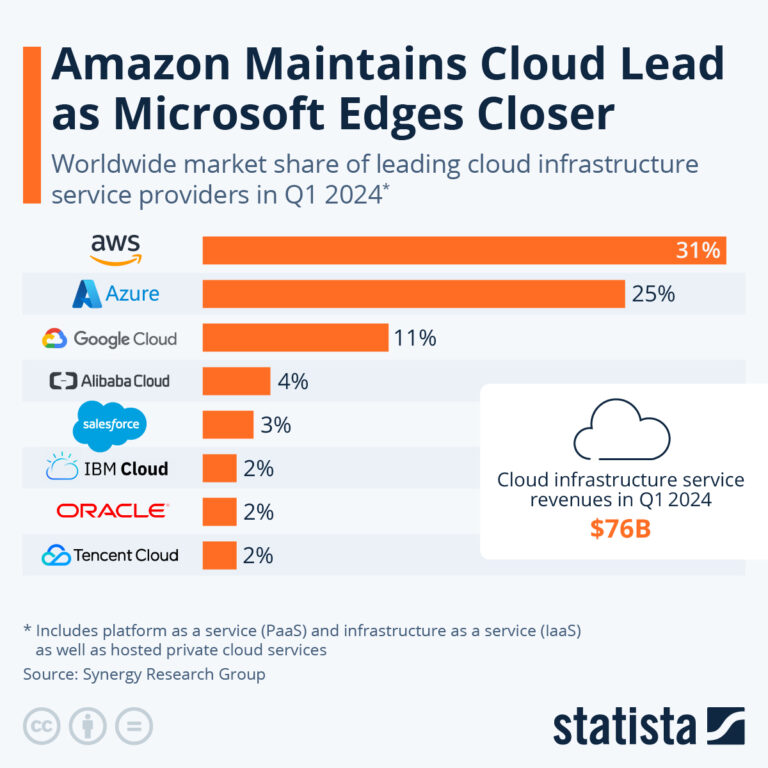

To guarantee that your online presence is reliable, accessible, and entirely functional, setting up a website with net hosting is an essential procedure that involves multiple crucial procedures.
The process usually begins with creating a website address, your website’s online address. After that, you must choose the best web hosting package for your website’s needs, whether shared hosting is best for smaller websites, VPS hosting is best for expanding websites, or dedicated hosting is best for larger organizations. After selecting a web hosting package, you must set up a content management system (CMS) such as WordPress, link your domain to the web hosting server, and configure email and file transfer protocol (FTP).
For your website’s overall functionality and long-term viability, web hosting configuration is crucial. Improved user experience, faster load times, and enhanced security are all benefits of a well-designed website, and these factors all boost search engine rankings and user satisfaction. Selecting the right website hosting package can also provide the scalability required as your website expands, preventing issues like downtime or poor performance during peak site visitor periods. Regarding this, VPS Malaysia will be a great substitute for “Web Hosting Malaysia,” providing stable, scalable, and dependable web hosting solutions that are specifically designed to satisfy the needs of people and businesses.
- Registering a Domain Name
What is a domain name?
A domain name is a special code that users enter into their web browsers to access your website; it works similarly to how a house code works. It’s an essential part of your online persona, assisting visitors in finding and identifying your website in the vastness of the internet. For instance, “example.Com” is the domain name in the URL “www.Example.Com.” The name itself (e.g., “instance”) and the domain extension, also known as the pinnacle-stage area (TLD) (e.g., “.com”) are its two primary components.
How to Choose the Right Domain Name
Establishing a strong online presence requires careful consideration of domain name selection. The name should relate to your logo or the content of your website, be memorable, and be simple to spell. It should ideally be brief and free of hyphens and complicated sentences that could confuse readers. It’s a good idea to plan for future expansion as well; pick a call that can handle any prospective growth in the breadth of your website or business.
Steps to Register a Domain Through a Domain Registrar
The next step after choosing a domain name is to register it with a site registrar, which is a service that handles domain name reservations. Start by trying to locate the location you want and calling the registrar’s website to check whether it is accessible. If it’s not, you can still buy it; if it’s sold out, the registrar can also provide names or extensions for opportunities. Once you’ve chosen your domain, you should choose the registration duration, which usually varies from one to ten years, and provide some private information. Upon completion of the acquisition, the domain becomes yours to utilize.
Tips for Selecting a Domain Extension
Choosing the right domain extension, also known as the top-level domain (TLD), is as important as deciding on the name itself. The majority of websites select the “.com” extension since it is the most widely used and well-diagnosed. However, depending on the purpose of your website and the audience you are trying to reach, other TLDs like “.Net,” “.Org,” or nation-specific extensions in addition to “.My” for Malaysia may also work well. As an illustration, “.org” is typically associated with non-income organizations, whereas “.net” is typically used by era corporations. When selecting the best extension, take into account your website’s purpose and target demographic.
- Selecting a Web Hosting Plan
An Overview of Different Types of Web Hosting Plans
The performance, security, and scalability of your website depend on choosing the right internet website hosting package when building it. A variety of web hosting plans are available, each meeting different needs and price ranges:
Shared Hosting: This option, in which multiple websites have equal server resources, is the most beginner-friendly and least expensive. Small business websites or personal blogs with little traffic are the ideal candidates for it. Shared website hosting, however, could have limitations in overall performance and personalization.
Virtual Private Server (VPS) hosting: This type of website hosting provides an intermediate option between dedicated and shared hosting. With VPS website hosting, each website has its own set of resources and more control over the server environment—all while sharing a single physical server. Because of this, it is appropriate for expanding websites that need more power and flexibility than shared web hosting can offer.
Dedicated Hosting: With dedicated hosting, a website is assigned its own entire physical server. The maximum degree of protection, customization, and overall performance is provided by this. Dedicated website hosting is usually utilized by large websites or websites with high traffic volumes that require the highest level of control and stability.
Cloud Hosting: Cloud web hosting provides scalable resources and high reliability by using a network of connected servers to host websites. It’s a fantastic substitute for websites that enjoy varying volumes of visitors because the materials may be changed as needed.
Managed Hosting: Updates, security, backups, and all technical aspects of maintaining a website are taken care of by managed hosting. This is an excellent choice for those who want a hands-off approach and must give their full attention to the content of their websites.
- Connecting Your Domain to Web Hosting
The Function of DNS in Linking Your Domain to Your Hosting
The procedure of linking your domain name to your web hosting server requires the Domain Name System (DNS). In essence, DNS works because IP addresses—numerical identifiers that servers use to find websites—are translated from human-readable domain names like “www.Instance.Com” via the internet’s address book. The DNS server answers this call to the relevant IP address when a user types your domain name into their browser, sending the user to your server-hosted website. One of the keystones of creating an online presence is setting up DNS correctly, which guarantees that traffic can access your website through its domain name without any issues.
How to Update Your DNS Settings to Point to Your Hosting Server
To get your domain to factor on your web hosting server, you’ll need to change the DNS settings after registering your area call and selecting a web hosting provider. Finding the DNS, or “Name Server,” settings usually entails entering into the admin panel provided by your domain registrar. The call server addresses you need to include in your local registrar’s DNS settings are provided by your web hosting provider. In essence, these name servers inform the DNS system that hosts your website. Once you make these adjustments, it may take up to 48 hours for the DNS to spread throughout your area and connect to your hosting server.
Troubleshooting Common Issues with Domain and Hosting Connections
Even though it’s generally safe to connect your domain to your web hosting server, there could be issues that keep your website from operating properly online. Incorrect DNS settings, such as entering the incorrect name server information or neglecting to update the required DNS information, are common issues. After changing the DNS settings, if your website still won’t load, ensure sure the information provided by your web hosting provider matches what you put in the control panel of your domain registrar.
DNS propagation delays could be another issue, as it takes time for the changes to spread throughout the internet. In this day and age, your website can not be accessible in good ways. There may also be brief connectivity outages if you just moved your domain to a new registrar or website hosting provider.
Verify your DNS settings first, then screen the propagation method with online tools like “DNS Checker” to troubleshoot those difficulties. To ensure that your website is accessible to users and to resolve any underlying difficulties, get in touch with your hosting provider’s customer care if problems continue.
- Installing a Content Management System (CMS)
What is a CMS and Why Is It Important?
With the use of software called a content management system (CMS), you can create, manage, and edit material for your website without needing a lot of technical knowledge. With the help of a content management system (CMS), you can easily add and change text, images, and other items on your website using an intuitive interface. This is especially crucial for organizations and people who frequently need to change the material on their websites but lack the coding skills necessary to do so manually. Additionally, a CMS makes it easier to maintain a consistent and professional online appearance by allowing for the modification of a website’s structure, style, and functionality.
Common CMS choices include Drupal, Joomla, WordPress, and many more.
There are many well-known CMS platforms out there, each offering specific benefits and capabilities:
WordPress: WordPress is the most popular content management system (CMS), powering more than 40% of all websites. It is renowned for its vast plugin library, user-friendliness, and vibrant building community. Because WordPress is so highly configurable, it can be used for anything from blogs to e-commerce websites.
Joomla: Joomla is a well-known content management system that provides a harmonious blend of versatility and ease of use. Although it is more complicated than WordPress, you have more control over the design and functionality of your website. Joomla works well for websites that need to have excellent user management and content management.
Drupal: With the help of builders and large organizations, Drupal is a robust and versatile content management system. Because of its high level of customization and security, it is suitable for intricate websites with high traffic volumes or specific needs. Its learning curve is greater than that of WordPress and Joomla, though.
A Step-by-Step Guide to Installing a CMS on Your Hosting Account
It’s a straightforward process to install a CMS on your website hosting account.
1. Access Your Hosting Control Panel: Sign in to the hosting control panel for your website (e.g., Plesk, cPanel).
2. Find the Auto-Installer: To make the CMS setup process easier, the majority of website hosting companies offer a one-click setup tool, such as Softaculous. Locate this gadget using the control panel.
3. Decide on a CMS: Select the CMS you need to install from the list of options (WordPress, Joomla, Drupal, etc.).
4. Configure Installation Settings: Enter the necessary information, your website’s call, the administrator’s login and password, and the domain where the CMS has to be installed. If you’re not installing the CMS in the root listing, you may also want to select the setup listing.
5. Finish the Installation: Push the setup button and watch with anticipation to see how it comes together. After completing the task, you will receive a confirmation email containing login credentials for your CMS dashboard.
Initial Configuration of the CMS for Optimal Performance
You must set up your CMS after installation to guarantee optimal overall performance.
1. Set Up Permalinks: To improve search engine rankings, make sure the URL structure is optimized for search engines.
2. Install Necessary Plugins: Install functionality-enhancing plugins or extensions, as well as caching devices, security plugins, and SEO plugins, depending on your content management system.
3. Select a Theme or Template: Pick a template that complements your logo and add your touches to make it uniquely yours.
4. Set up Security Settings: To secure your website from attacks, install a backup solution, enable SSL, and set up protection plugins.
5. Optimize Performance: To make sure your website loads quickly and functions easily, make changes to the cache, image compression, and database optimization settings.
- Configuring Email and Other Services
Setting up professional email addresses with your domain
Having the option to generate business-like email addresses (yourname@yourdomain.com) is one advantage of having your domain named. This gives your brand and communication credibility. Go to the email phase in your hosting control panel after logging in to install email addresses. From there, you may add new email bills to your domain by providing a username and password. Once installed, you could set it up to operate with email clients like Gmail or Outlook, or you could access your email using Webmail.
An Overview of Email Hosting Options

Regarding email website hosting, there are two main options available to you:
Using Your Web Hosting Provider: Email hosting is typically included in the packages offered by internet hosting providers. This is a useful and practical choice, particularly for smaller businesses. Still, the email storage and functionalities are likely limited in comparison to 0.33-party solutions.
Third-Party Email Services: You might think about using third-party email services like Microsoft 365 or Google Workspace if you want more advanced capabilities and greater dependability. These options come with additional productivity tools, a bigger garage, and improved security, but they also have a separate subscription cost.
Setting Up Additional Crucial Services (DBs, FTP Access, etc.)
In addition to email, there are additional essential services that you must set up to effectively manage your website:
FTP Access: You can upload, download, and manage documents on your server using the File Transfer Protocol (FTP). Installing FTP requires obtaining permissions, setting up an FTP account in the website hosting control panel, and connecting to your server using an FTP client such as FileZilla. This is primarily helpful for managing many web page documents simultaneously.
Databases: To store content and settings, the majority of CMS systems rely on databases. You might need to set up a database (like MySQL) and a matching user with the necessary rights in your website hosting control panel. Your content management system may use this database to manage website content.
Backups: Keeping a regular backup of your website is essential to its security. To ensure that the statistics on your website are safe and can be recovered in the event of an issue, set up automatic backups through your web hosting provider or utilize plugins.
Your website will be fully functional, reliable, and ready for growth if those crucial services are configured properly.
- Conclusion
Ultimately, creating a website involves several critical processes, all of which are necessary for the overall success and functionality of your online presence. Every decision you make, from picking the ideal domain name and web hosting package to setting up a content management system and connecting your location to the web hosting server, is crucial to ensuring the smooth and efficient operation of your website. Email services, File Transfer Protocol (FTP) access, and other essential hardware should be configured correctly to enhance the functionality and security of your website and make it a reliable source of traffic.
Selecting the best website hosting company is very important since it has an immediate impact on the scalability, security, and speed of your website. Whether you’re running a large enterprise, a personal blog, or a fledgling business, selecting a hosting solution that aligns with your specific needs is essential for success in the long run. Looking for dependable and high-performance web hosting options? VPS Malaysia is a great choice for “Web Hosting Malaysia,” offering customized solutions that are just what the market requires.
Become a Harlem Insider!
By submitting this form, you are consenting to receive marketing emails from: Harlem World Magazine, 2521 1/2 west 42nd street, Los Angeles, CA, 90008, https://www.harlemworldmagazine.com. You can revoke your consent to receive emails at any time by using the SafeUnsubscribe® link, found at the bottom of every email. Emails are serviced by Constant Contact



